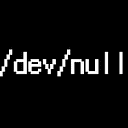Twitter Spaces Buffer Overflow Defense
import kotlin.math.min
object TwitterSecurity {
const val MAX_SAFE_LENGTH = 1000 // Adjust based on your requirements
// 1. Input Validation
fun validateString(input: String): String {
// Check for excessive length, special characters, etc.
if (input.length > MAX_SAFE_LENGTH || !input.matches("[a-zA-Z0-9 ]+".toRegex())) {
throw IllegalArgumentException("Invalid input format")
}
return input.trim()
}
// 2. Bound Checking
fun copyBytesSafely(source: ByteArray, dest: ByteArray, offset: Int, length: Int) {
val copyLength = min(length, dest.size - offset)
System.arraycopy(source, 0, dest, offset, copyLength.coerceAtLeast(0))
}
// 3. Use Safe APIs
fun postTweetSafely(input: String) {
val sanitizedInput = input.take(MAX_SAFE_LENGTH)
TwitterClient.postTweet(sanitizedInput)
}
// 4. Implement Security Libraries
// Include security libraries or frameworks to secure audio processing and user interactions.
// 5. Report and Monitor
fun reportSuspiciousActivity(sessionId: String, message: String) {
TwitterClient.reportSuspiciousActivity(sessionId, message)
// Monitor app logs for crash patterns or unusual activity
}
}
object TwitterClient {
// Example TwitterClient methods
fun postTweet(message: String) {
// Implementation for posting a tweet
}
fun reportSuspiciousActivity(sessionId: String, message: String) {
// Implementation for reporting suspicious activity
}
}
fun main() {
// Example usage
try {
val userInput = "Hello, Twitter! 🐦"
val validatedInput = TwitterSecurity.validateString(userInput)
TwitterSecurity.postTweetSafely(validatedInput)
} catch (e: Exception) {
println("Error: ${e.message}")
// Handle the exception, log, or report to the user
}
}Purpose:
The script is designed to be part of an Android application that interacts with the Twitter API. It focuses on implementing security best practices to mitigate potential risks like buffer overflow and overspray attacks.
Components:
TwitterSecurity Object:
This object contains methods for enhancing security within the application.
Input Validation (validateString):
Validates user input to ensure it meets certain criteria (length, character set).
Rejects input that exceeds a predefined length or contains characters beyond alphanumeric and spaces.
Bound Checking (copyBytesSafely):
Safely copies bytes from a source array to a destination array.
Prevents buffer overflow by ensuring that the copy operation does not exceed the bounds of the destination array.
Use Safe APIs (postTweetSafely):
Posts a tweet to Twitter’s API, ensuring the content’s length is within the predefined safe length.
Calls the postTweet method from TwitterClient with sanitized input.
Implement Security Libraries:
Placeholder for including security libraries or frameworks to secure audio processing and user interactions.
Emphasizes the importance of integrating third-party libraries or utilizing Android’s security APIs for secure processing.
Report and Monitor (reportSuspiciousActivity):
Reports suspicious activities to the Twitter API, providing session information and a message.
Recommends monitoring app logs for unusual activities or potential threats.
TwitterClient Object:
This object simulates the Twitter API client and includes methods for posting tweets and reporting suspicious activity.
Main Function:
Demonstrates how to use the TwitterSecurity methods by validating user input and posting a tweet to Twitter’s API in a try-catch block.
Catches and handles exceptions by printing error messages.
Conclusion:
The script provides a framework for enhancing security within an Android application interacting with the Twitter API. It focuses on input validation, preventing buffer overflow, and reporting suspicious activities. However, it’s crucial to integrate specific security libraries and consider platform-specific security guidelines to fortify against various attack vectors effectively.
